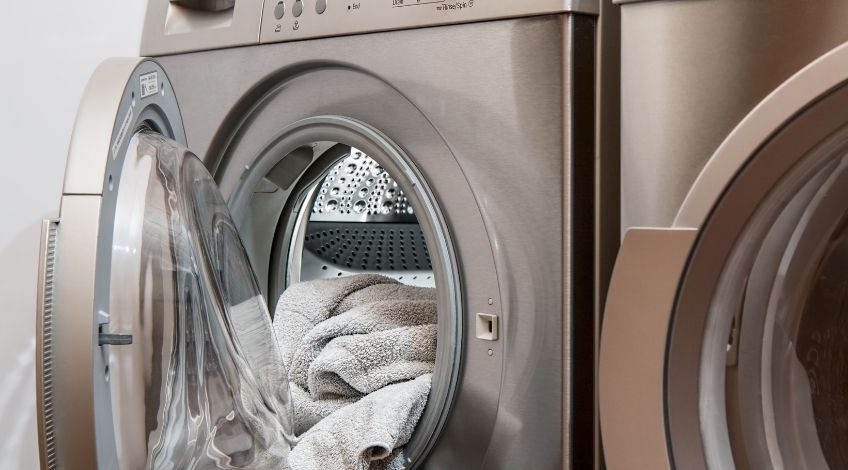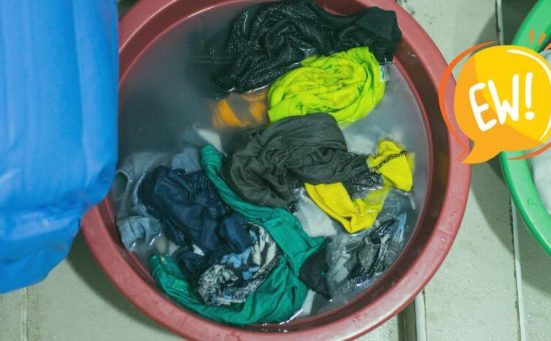
What Temperature Is Considered A “Warm Wash”?
Most of us have become converted to the 30 degree wash cycle because with the introduction of modern detergents we can get our clothes clean and save on electricity bills. Not only is this an energy saving and environmentally friendly programme, it also helps to prevent colours running too.
However, there are some tough stains that a 30 degree wash just can’t remove. For those you’ll need a warmer wash cycle. But what is a warm wash?
If this is something that you have questioned, keep reading.
What Is A Warm Wash Cycle?
Modern washing machines have several wash cycles and temperatures which range from cool to hot washes. They run as follows;
- Cool Wash
The cool wash cycle runs at 30 degrees although there are more and more machines that now include a 20 degree wash cycle which is colder still. - Warm Wash
The warm wash cycles include the 40 degree cycle and the 50 degree cycle. Although the 40 degree cycle cleans just as well as the 50 degree cycle, and it is used more often. For this reason, many new machines have omitted the 50 degree wash cycle. - Hot Wash
The 60 degree wash cycle is considered to be the hot wash. It is used for removing ingrained stains as well as germs and bacteria from robust fabrics able to withstand this high temperature wash without shrinking or becoming damaged. - Very Hot Wash
The 90 degree wash cycle is considered to be the very hot cycle. There are only a few really strong fabrics that can withstand the intense 90 degree temperatures. This cycle is always used for a service wash to remove detergent residue, germs, bacteria and mould and mildew spores from the machine.
For more specific information on wash cycles follow this link.
When To Use The Warm Wash Cycle
Most clothes can be washed at 20 or 30 degrees nowadays as long as you use a low temperature detergent and a laundry sanitiser. But for some stains a 30 degree wash cycle just isn’t enough.
When you need a warmer wash cycle it’s always best to go for a warm cycle as opposed to a hot cycle if possible. It will be gentler on your clothes, be less likely to cause the colours to run, the clothes to shrink or become damaged and save you money on electricity.
As we said earlier the warm wash cycles consist of the 40 degree and the 50 degree cycles. With the improved detergents available nowadays, the 50 degree wash is almost obsolete as the 40 degree cycle is just as good.
Using the 40 degree cycle saves on electricity compared to using the 50 degree cycle which makes it environmentally better too.
What Are The Pros & Cons Of A Warm Wash?

Let’s look at the pros & cons of the warm wash cycle.
The Benefits
The main benefits include;
- Uses less energy than a hot wash
Washing machines use most electricity to heat the water during the wash cycle. Obviously a cool wash will use the least amount of electricity, but a warm wash uses significantly less than a hot wash. - Improved stain removal compared to a cool wash
Cool washes are great for washing clothes that aren’t too stained or dirty to begin with. But for dirty, stained clothes a warm 40 degree wash gives you the best chance of getting the clothes clean the first time.
The Disadvantages
The main disadvantages include;
- Eradicates less germs & bacteria than a hot wash
There are many germs and bacteria that can survive a 40 degree wash. To remove these you will either need a hotter wash or the addition of a laundry sanitiser along with a detergent designed to work at 40 degrees. - Doesn’t clean as well as a hot wash
A hot wash will remove many more stains than a 40 degree wash. However, a 40 degree wash can deal with many stains that a 30 degree wash will leave behind. - Uses more energy than a cool wash
A 40 degree wash needs more electricity to heat the water to that extra 10 degrees, when compared to a 30 degree wash. - Less environmentally friendly
As it takes more power to raise the water temperature to 40 degrees, it is less environmentally friendly than a cool wash cycle.
When Is A Warm Wash Not Enough?
The warm 40 degree wash cycle is far better at removing stubborn stains and many more bacteria than a cool 20 or 30 degree wash cycle. But there are some stains and many bacteria that can remain even after a 40 degree wash.
You should use a hot wash instead of a warm wash if;
- You have heavily soiled clothes
There are many ingrained stains that need a hot wash to remove them. Mud and grass stains for example. - You have oil stained clothes
Engine oil, cooking oil, or even grease will all need a hot wash to be eradicated. - You need to wash towels
As towels come into direct contact with our skin, they are more likely to harbour germs and bacteria. It will take a 60 degree wash to remove them. - You need to wash bedding
Bedding also comes in to direct contact with our bodies and is therefore also likely to harbour germs and bacteria. - You need to wash the clothes of someone who is ill
If you launder a sick person’s clothes or bedding, you should use a hot wash to remove any germs, bacteria or viruses.
Before using any wash cycle you should check the wash care label first. You will find a symbol that looks like a bucket with water in it. It will also display a number, that number is the hottest temperature recommended for washing that item.
If there is a 30 with the symbol, it indicates that the item can be washed at no higher than 30 degrees C. A 40 indicates it can be washed at 40 degrees and so on.
Is It A Good Idea To Always Use The Warm Wash Cycle?
The warm wash cycle offers the best of both worlds, a compromise between energy saving and cleaning ability. It is usually cool enough to prevent clothes from becoming damaged due to shrinking or stretching as well as preventing colour run to a certain extent.
But hot enough to remove many dirt stains and some germs and bacteria. However, a 40 degree wash cycle uses more energy, costs more to run and is not as environmentally friendly as a 30 or 20 degree wash cycle.
Nor will it remove as many stains or bacteria as a 60 degree wash cycle.
We are all looking for ways to save money, energy and to some extent the environment we live in. Cooler wash cycles are better for all 3 but don’t always get the laundry as clean as we would like.
As always the temperature you choose to wash your clothes is a personal choice. However it needs to be influenced by how dirty the clothes are, how colour fast they are, the material they’re made from and the guidance given in the wash care label.
SEE ALSO: Is 20 Degrees A “Cold Wash”? (when & how to use it)
Frequently Asked Questions
A 30 degree C wash is considered to be a cool wash cycle. 40 degrees is considered to be a warm wash.
A warm wash is considered to be a 40 degree wash on a washing machine. 20 and 30 degrees are considered to be cool washes, 40 and 50 degrees are considered to be warm washes and 60 is a hot wash with 90 degrees considered to be a very hot wash.
Washing clothes at 30 degrees is more environmentally friendly and costs less money. But it doesn’t always get clothes as clean as they would become at 40 degrees. If your clothes are only slightly dirty, prone to the colours running or likely to shrink, we would recommend washing them at 30 degrees as opposed to 40.
Also, follow us on Pinterest ...



